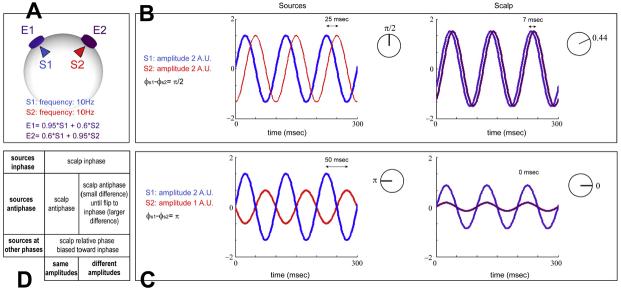Fig. 6.
Distortion of apparent phase during phase-locked states. (A) Summarizes the model with sources S1 and S2 animated with steady oscillations at 10 Hz, and the signal at electrodes E1 and E2 formed with a linear mixture of both sources. (B) Shows phase distortion for sources with symmetrical amplitudes that are coupled with a relative phase of p/2 rad. Apparent relative phase between electrode signals is much smaller than relative phase between source signals. (C) Shows that beyond a threshold of amplitude asymmetry, source patterns antiphase (left) flip to scalp patterns inphase (right). (D) summarizes biases in phase relationships at the scalp relative to source parameters (amplitude, phase). Sources inphase are the only ones that are not distorted at the scalp. Sources antiphase are preserved for small values of amplitude differences but shift to strict inphase beyond a critical amplitude difference. All other source phase relations tend toward inphase at the scalp.

